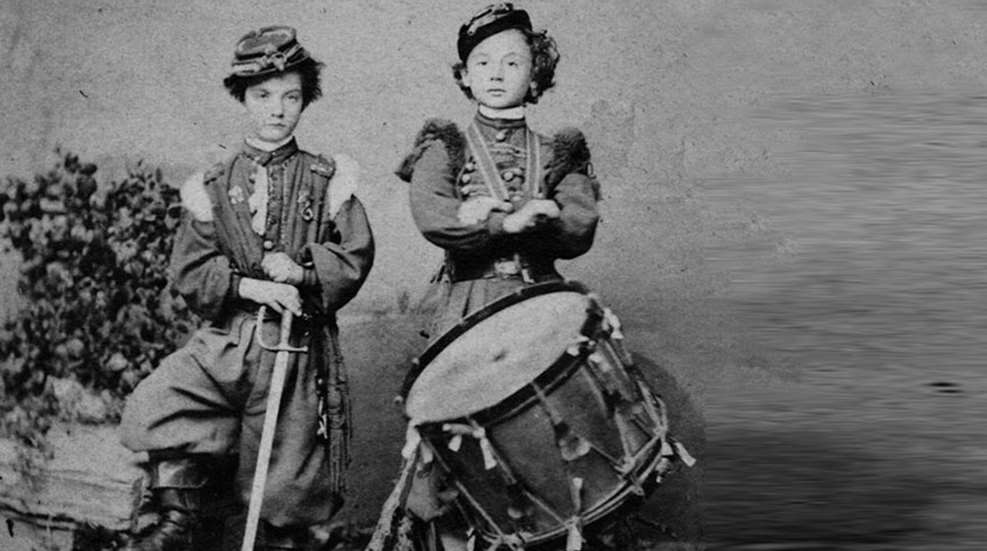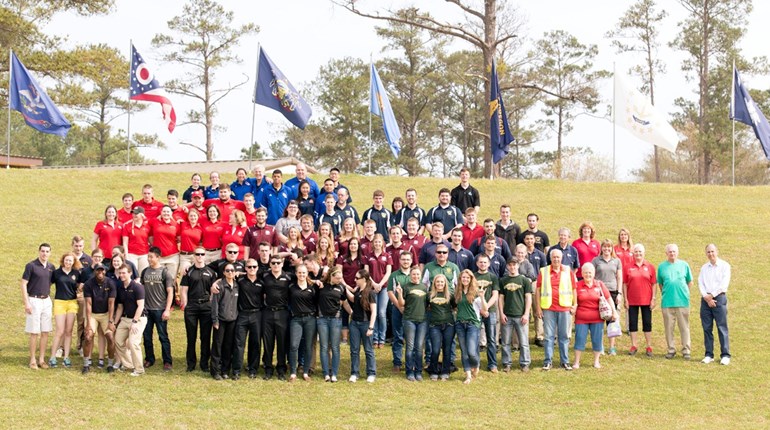
During America’s Civil War (1861-1865), drummer boys were needed on the battlefield by both Union and Confederate armies to convey audible orders—advance, retreat, etc.—during the literal fog of war. It was the age of black powder, with thousands of small arms and hundreds of cannons continually firing during a typical battle. Consequently, visibility was often limited to only a few yards, rendering visual signals, such as flags, useless. Drummer boys played a key role, sometimes finding themselves in the heat of conflict—Minie balls from rifles and grape shot from cannons whining past. As a result, many were wounded or killed.
Drummer boys were usually teenagers, but occasionally even preteens were pressed into service. Such was the case with John Clem, age 11.
Born in the small town of Newark, Ohio, in 1851, Clem left home at age 10 following the death of his mother in a train accident. The Civil War was just beginning, and young Johnny—as he was then known—attempted to join the 3rd Ohio Infantry as a drummer but was rejected for his age and small size. He then tried joining the 22nd Michigan as they marched through town headed south, but was refused there, too.
Not easily discouraged, Clem tagged along with the Michigan unit, eventually winning the officers’ admiration to the point that they made him not only a drummer boy but their mascot. The officers even chipped in to pay him the regular wages of a Union soldier, $13 per month. Clem would officially enlist in the 22nd Michigan two years later.
John Clem is best remembered for his involvement in the 1863 three-day Battle of Chickamauga. The first major battle of the war fought in Georgia, it was a defeat for the Union Army that produced the second-highest number of casualties since Gettysburg—totaling nearly 35,000 Yankee and Rebel soldiers wounded or killed.
In addition to his drum, Clem had been issued a musket with the barrel and stock shortened to fit him. During the Union retreat he became separated from his unit and was approached from behind by a Confederate soldier who drew a revolver and demanded he surrender. But instead of laying down his weapon and giving up, Clem whirled around and shot the soldier at close range. The soldier turned out to be a Confederate colonel.
Clem eventually reunited with his unit, and upon telling the story of his narrow escape the “Drummer Boy of Chickamauga” was promoted after the battle to lance sergeant, the youngest soldier (age 12) ever to be a noncommissioned officer in the United States Army. Later, Chief Justice of the United States Supreme Court and fellow Ohioan, Salmon P. Chase, decorated Clem for his heroics at Chickamauga.
Despite press reports of the incident that persisted into the early 20th Century, some Civil War buffs doubt the veracity of Clem’s claimed shooting of the Confederate colonel. If it did happen, the soldier in question was thought to be Colonel Calvin Walker, whose 3rd Tennessee opposed the 22nd Michigan toward the end of the Battle of Chickamauga.
Later during the war, however, Clem was not so lucky. While guarding a train he and other Union soldiers were taken captive by Confederate cavalry. The rebels confiscated Clem’s army uniform, of which he was exceedingly proud, and his precious hat (which was said to have no fewer than three bullet holes piercing it). A short time later, he was part of a prisoner exchange.
Southern-sympathizing newspapers used it to claim, “what sore straits the Yankees are driven, when they have to send their babies out to fight us.” John Clem subsequently participated in other Civil War battles, and was twice wounded, before being discharged from the army in September of 1864.
Following the war Clem graduated from high school, then attempted to enter the United States Military Academy (West Point) but failed the entrance exam. However, then-President Ulysses S. Grant (who, later, was a co-founder of the NRA) did not forget this former soldier who had served so faithfully. He appointed Clem second lieutenant in the 24th United States Infantry in 1871; Clem was promoted to first lieutenant in 1874.
John Clem remained in the army until 1915, when he reached the mandatory retirement age of 64. At the time of his retirement, he was the last veteran of the Civil War still serving in the U.S. Army and had reached the rank of colonel. As was customary for Civil War veterans who had attained such rank, Clem was promoted to brigadier general upon retirement. A year later, while on the retired list, he was promoted a final time, to major general.
Today, John Clem (1851-1937) is still remembered in the town of Newark, Ohio. A 6-foot bronze statue of a young John Clem stands near Buckingham Meeting House, and a public school is named after him: Johnny Clem Elementary School.
However, John Clem was not buried in Ohio; he is interred at Arlington National Cemetery in Virginia. (On a final, terribly ironic, historical note: Immediately prior to the Civil War, the plantation which would become Arlington National Cemetery was owned by Mary Custis, the wife of the Confederate general that led the South: Robert E. Lee.)






































